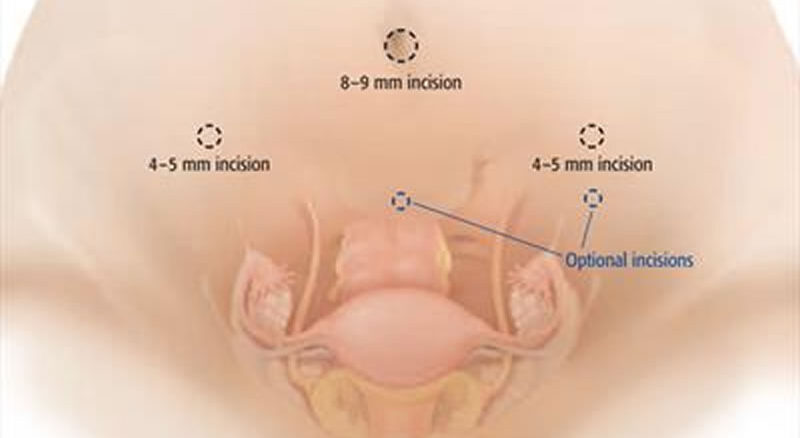Laparoscopic hysterectomy is the surgical removal of the uterus [womb] through small incisions on the skin. The uterus is disconnected from all its supporting structures and usually removed through the vagina. It is a procedure carried out in women who have completed their family size and have no desire for more children. It may be advised if there are chances that cancer could arise in the uterus/cervix in the future.
It is usually indicated for the following conditions:
- Heavy/abnormal vaginal bleeding
- Uterine fibroids in women who have completed their family’s size.
- Abnormal pap smear or endometrial hyperplasia
- Adenomyosis
- Uterine prolapse
WHAT TO EXPECT
Women going for a hysterectomy will need to understand that they will not menstruate after the procedure. If the ovaries are removed, they will go through symptoms of menopause immediately. During the procedure, about 4 tiny incisions will be made on the abdominal wall and a telescope will be inserted into the cavity to perform the surgery. The procedure carries some potential risks which your doctor will discuss with you. These include anaesthetic risks and the risks from carrying out the procedure itself.
The uterine specimen removed will be sent for histological diagnosis to ensure that there are no cancerous lesions on the uterus or cervix.
HOW TO PREPARE FOR PROCEDURE
Your doctor will counsel you before the procedure and you will need to give informed consent. You will be counselled to be on a soft or liquid diet for about 2 days before the procedure and given some medications to ‘empty’ your bowels. The night before the procedure you will be told not to take any meals from midnight. The anaesthetist would review you and ask questions to assess your risk for anaesthesia. On the morning of the procedure, you can take a shower before you are wheeled into the theatre.

